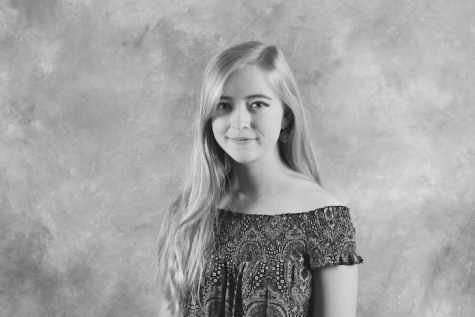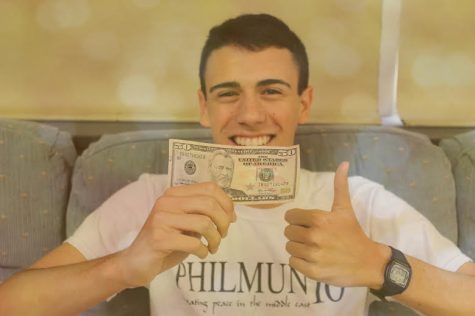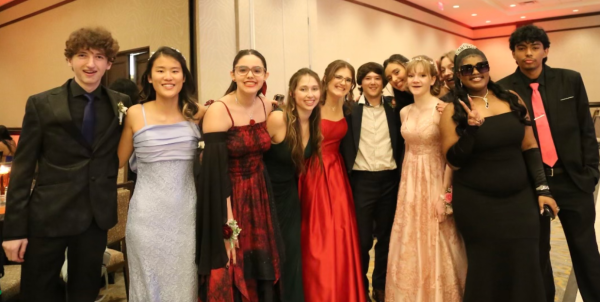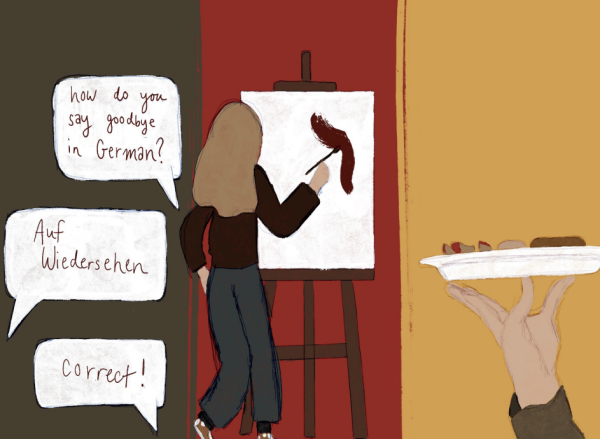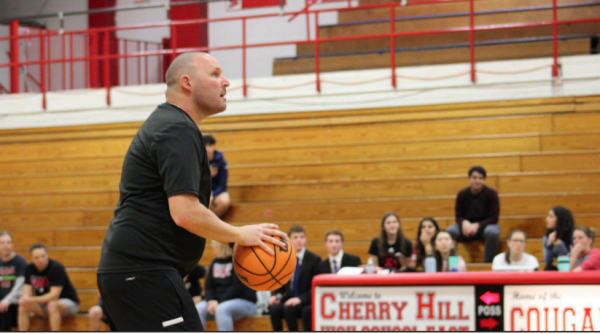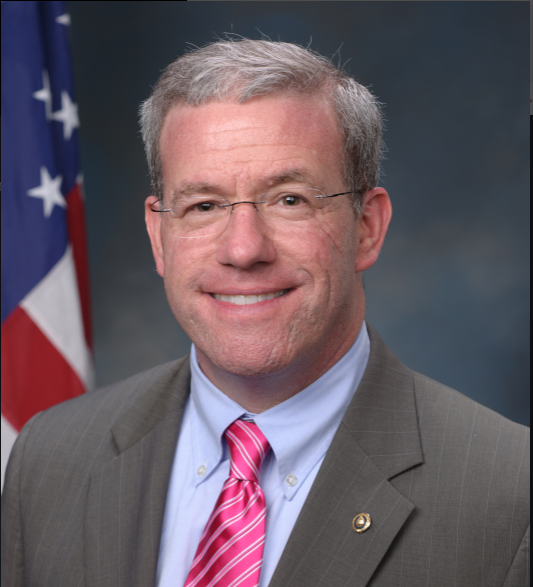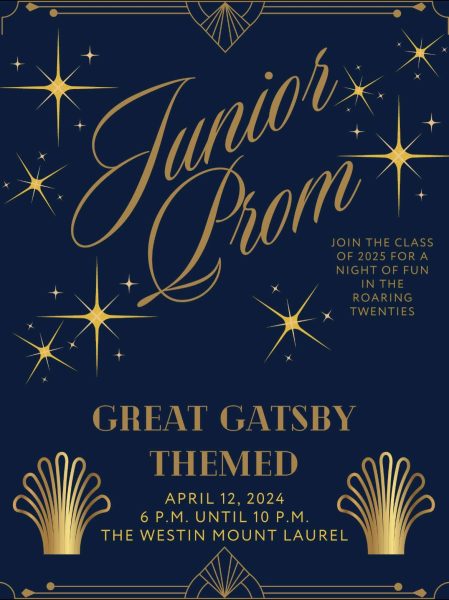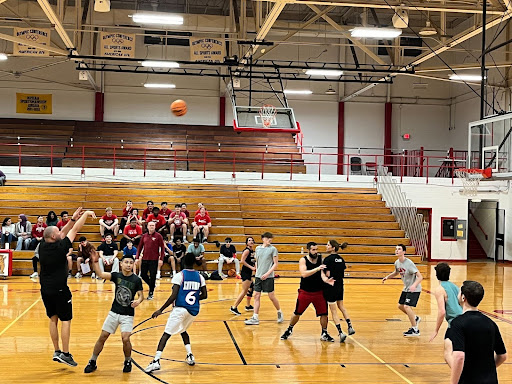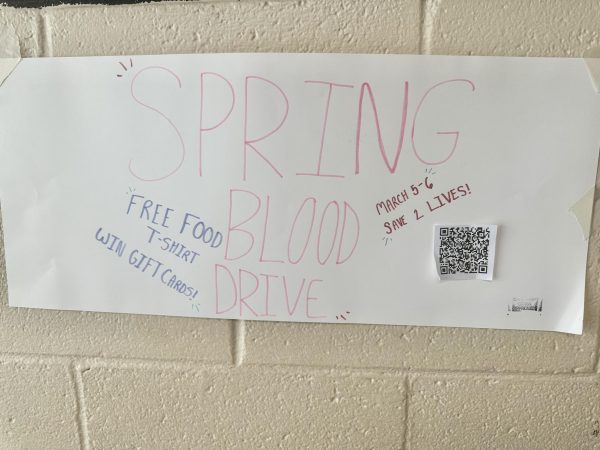Jocks vs. Nerds: The Role of Red and White Night’s Non-Athletic Events
As Cherry Hill East’s Red and White spirit competition carried out its second annual festivities, it had come to represent not only a hard fought battle between the Red Team Jocks and the White Team Nerds, but also an even harder fought battle to keep students involved in the games and invested in their outcome.
Red and White activities commenced on March 29, and continued on until Red and White Night on April 14. Red and White Night was a grand culmination of the events at which the winning team was announced. As the big day approached, news of ongoing Red and White events vied for poster space in the hallways and jockeyed for position within the student body’s limited attention spans, filling every lunch break with myriad events and flooding student inboxes with constant updates. “Come out to participate or compete in this week’s competitions,” read one such email, sent to the Navience-run student body mailing list on April 4 by East guidance counselor Mr. Darren Gamel. The email went on to list the events offered throughout the week, to take place during lunch breaks one and two. Offerings from April 4 to April 9 included athletic events like half-court and three-point basketball competitions, mentally challenging events such as trivia contests and a spelling bee, and other miscellaneous offerings ranging from a Cake Wars baking competition to a water-balloon toss. Similar events had taken place throughout the previous week.
Red and White’s more traditional competitions had been the most successful at sparking student interest and involvement.
“Our biggest competitions have been the ones that are more physical,” said Gamel, who runs Red and White events. “Over the course of the first week in competition, we’ve had about 500 [participants]. Most of them have come from the volleyball tournament, the basketball tournament… that kind of stuff.”
Mrs. Jennifer DiStefano, East’s anti-bullying specialist, agreed that events oriented around athletics seem to have no problem retaining popularity.
“It’s nice to see the volleyball games,” she said. “It’s almost like recess… the more people that people can get involved, the better.”
However, those contests and events that are reliant on academic ability rather than athletic prowess seem to have a harder time generating high levels of student interest. For example, the Cake Wars baking competition consisted of a paltry three entries; a Nerds-themed brain-shaped cake by Steven Ye, so precisely shaped that it was suspected of being store-bought until the judges sampled its unique flavor; a neutrally themed, fondant-coated marble concoction by Phayar Minhas (’19), who frequently bakes “for occasions and for fun, with a specialty of cake pops”; and a Jocks-themed cake by Michaela Jarvis (’19), whose colorful pound cake decorated to resemble East’s dream football stadium eventually won it all. Judges Mrs. Pat Dilba and DiStefano determined all three cakes to be tasty, and well crafted. Even so, only half as many entries were represented as last year’s six cakes. On the same day, Lecture Hall Two – the intended home of a Red vs. White spelling bee during lunch break two – remained dark and deserted during the break, lacking both competitors and spectators.
Gamel’s brainteaser battle, which took place on April 5 during lunch break one, initially seemed a bit more promising when the room was full at the start of the period. However, most students in the room declined to represent their teams in the challenge. In fact, the white team could initially only scrounge up a single player – Eli Vaupen (’19), who jokingly claimed “I’m just here so I don’t get fined,” – prompting one boy to duck outside into the hallway and recruit enough participants for the game to begin. Ultimately only six players, three from each team, could be coerced into participating. Samantha Mitchell (’17), Miranda Sheppard (’19), and Vaupen represented the White Team, while Chris Estrada (’16), Michelle Grazioli (’16), and Phillip Korth (’16) played for the Red Team.
So why were showings for non-athletic events so low this year? Can the Red Team Jocks and the White Team Nerds have fallen victim to a dreaded sophomore slump? Or can the inconsistencies in event attendance simply be chalked up to early trial and error, as East staff figure out which events will enjoy the most success with student competitors?
Gamel, who remains optimistic about the state of this year’s competition, said that lower attendance is normal for more specialized events such as the Cake Wars, brainteaser battle, and spelling bee.
“Part of the idea with Red and White competition is to appeal to as broad of a range as possible, not just those that are interested in physical competition…. Sometimes [academic events] draw smaller crowds, which is okay.”
Many of the events offered are designed to appeal to particular microcosms of students. This means that while these events might have lower attendance because they do not hold universal appeal, they will enable students with specialized interests to connect to the competition in a way that they may not have been able to before. This way, everyone will be encouraged to participate in the Red and White competition in a way that best suits him or her. Gamel also noted that during East’s school wide spring blood drive, which took place on April 2 and April 3, attendance for certain academically oriented events such as the brainteaser battle were affected due to “competition” with the blood drive. Overall, Gamel maintained, this year’s competition has been better received by the East student body; staff involvement is up, and although some competitions still see objectively low turnout, many have, at least, seen more involvement then last year.
That said, Gamel and the rest of the East faculty are certainly open to suggestions.
“Last year, we took feedback… for how to improve things. This year, we tried to incorporate all of those changes, so we expect something similar for this year, to make [next year] better,” said Gamel.
Perhaps these incoming suggestions will help shape next year’s activities. DiStefano, for one, thinks that Red and White activities could be further improved through a change in pace. If activities were held once a month all year instead of several times a day for a few weeks, she suggested, culminating in April’s Red and White night, perhaps student interest would be heightened even further.
“It’s nice to see people getting involved,” reflected DiStefano. As the school anti-bullying specialist, she appreciates the Red and White events because “the [important] thing is getting all different types of kids who wouldn’t normally be together, together. That’s the best part of the whole competition.”
By this logic, poor attendance at less traditional events can be excused, because the existence of these events helps students connect with each other in a positive environment.
And besides, how many schools can say that their spirit activities include Star Wars trivia and a Just Dance contest? In terms of creativity of activities, East’s Red and White night certainly takes the cake.
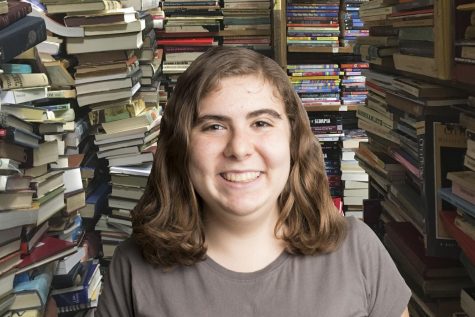
Ilana Arougheti has been on the Eastside editorial board for three years, but her distaste for Comic Sans and her loyalty to Times New Roman are just as...

